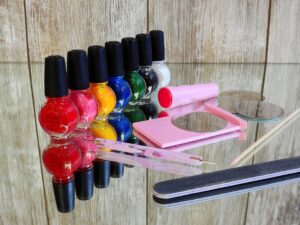Unveiling The Splendor of Lab-grown Diamond Jewelry

Countless individuals today cannot tell a lab-grown diamond from one formed naturally. Manufacturers use high-pressure, high-temperature chambers to recreate the conditions that lead to the formation of natural diamonds, and it is difficult to distinguish between the finished products. This isn’t surprising because mined and lab-grown diamonds are chemically, physically, and optically similar.
As a result, the Federal Trade Commission now defines both mined and lab-grown versions as diamonds, removing the term natural from mined diamonds. What does this mean for consumers? What should a person know when purchasing jewelry with lab grown diamonds?
Affordable Prices
A person might choose a lab-grown diamond rather than a mined one to save money on the purchase. Lab-grown diamonds cost much less than mined gems, so a person can purchase a larger diamond by selecting the lab-grown version. Colored diamonds are more affordable when a person chooses the lab-grown version.
However, there is concern about the resale value of jewelry pieces containing lab-grown diamonds. The resale value is much lower, and the gem may have no resale value. A consumer must consider this when determining which option is right for their needs.
Environmental Impact
The mining industry continues to receive criticism for its extraction methods, which lead to excessive pollution. In addition, mining serves as a key cause of deforestation. Lab-grown diamonds eliminate these concerns. The creation process requires significantly less water and produces one-twentieth of the amount of CO2, yet quality isn’t sacrificed. Certain laboratories today take this an extra step and create diamonds that are certified to be climate neutral.
Ease of Access
One reason the price of mined diamonds continues to climb is that a finite number of mined diamonds are available today. Lab-grown diamonds eliminate this issue. Manufacturers can produce as many diamonds as the world desires without harming the environment by mining.
Emotional Value
Before purchasing a lab-grown diamond, consider how the recipient will view the diamond. It serves as a symbol of a person’s love, but some people want a natural diamond. Other individuals want nothing to do with mined diamonds, as they worry about their carbon footprint. They also take into account the treatment of miners responsible for pulling these gems from the ground. Consider the person’s preferences to determine which option should be used when choosing the right gem.
Distinguishing Between a Mined and Lab-Grown Diamond
The average person cannot distinguish between a mined and a lab-grown diamond. In fact, many jewelers cannot make this distinction either. A person must send the gem to a gemological laboratory to have it tested for confirmation of the diamond type. Graders use specialized equipment to evaluate many aspects of the gem when determining its origin. The conditions under which the gem is formed allow experts to determine where it was sourced.
Furthermore, the laboratory can determine whether any post-growth treatments were applied. These treatments are used to provide the gem with a fancy color or to alter the natural color of the diamond. Any report provided by the laboratory will share this information.
Jewelry made using lab-grown diamonds will probably become more popular in the future. These diamonds eliminate the concerns seen with mined diamonds while still allowing people to have access to a gem they love. Learn more about this alternative to mined diamonds, as it may be exactly what is needed for an upcoming gift or purchase.










